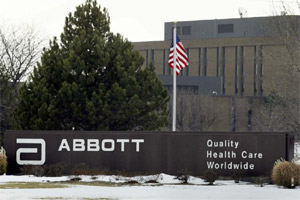Abbott Laboratories
 Automated Fault Detection & Diagnostic Services
Automated Fault Detection & Diagnostic Services
North Chicago, IL
Project Size: 22 Buildings (incl. 42 AHUs and 24 CHW Stations)
Project Description
Recognizing that automation can provide data-driven solutions for realizing energy savings goals, Abbott’s corporate team along with the North Chicago Facility Management group decided in 1999 to implement FDE’s PACRAT (Performance and Continuous Recommissioning Analysis Tool) diagnostic software that specializes in the detection and diagnosis of operational problems for HVAC systems. Abbott engineering and controls engineers were early-adopters of automated diagnostics and were instrumental is further development of the diagnostic tool. PACRAT analysis remained active at the North Chicago campus until 2006 when the campus was consolidated with another location.
PACRAT Automated Diagnostics - Technical Analysis
Following the initial installation of PACRAT in 1999, Abbott staff independently used six months of data collected from 8 air handling systems and evaluated the results for accuracy and usability. They found that - in over 92% of the anomaly reports - PACRAT information helped to identify problems. In over 85% of the cases, PACRAT identified exactly what was wrong. Of the ‘false’ anomalies reported, they determined that most of these resulted from correctable errors in initial configuration criteria such as erroneous controls details, misapplication of minimum outside air volumes during economizer operation, and mismatches between configured and actual operational parameters. In a related published article, Abbott staff further stated that “the problems not found by PACRAT do not reveal any great deficiencies as they were subtle and not easily recognized even by a moderately experienced evaluator.
Economic Analysis
An economic analysis was performed by Abbott staff when PACRAT was being used to analyze BAS operational data for 15 air handling systems and 22 chilled water stations. They determined that the annual calculated energy savings at the AHUs due to identification of control anomalies to be $24,000 per year and the energy savings at the CHW decoupling stations to be $34,000 per year. They further estimated an additional annual labor savings of $25,000 due to the reduced frequency of preventative maintenance on controls enabled by automated diagnostics.